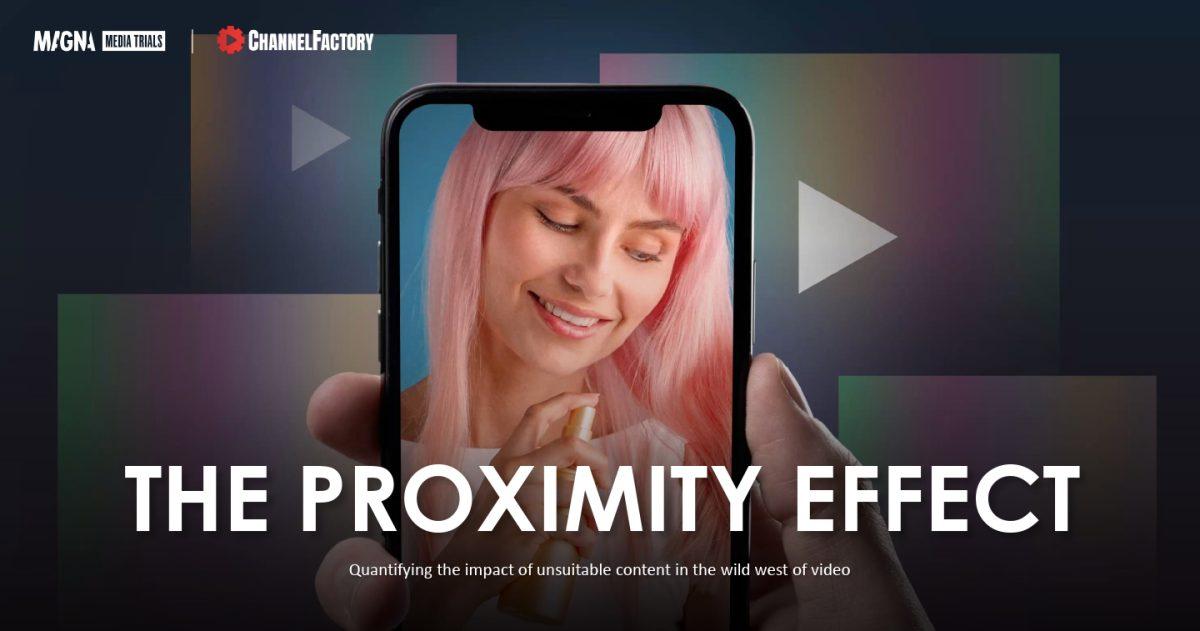SINGAPORE — New research conducted by leading brand suitability platform, Channel Factory, in partnership with MAGNA, explores the layers of content suitability and how it can affect brands’ advertising efforts. “The Proximity Effect: Quantifying the Impact of Misaligned Content in the Wild West of Video” explored what brands need to know about misaligned content in different ad environments, as well as the role proximity plays in determining brand suitability.
Misaligned content for the test brands was determined as content that commonly produces visceral reactions in people, including skin conditions (e.g. pimple popping), ASMR (videos inducing autonomous sensory meridian response) and Mukbang (video host consumes various quantities of food). Such topics continue to trend in Asia-Pacific. For example in Singapore, related search queries for “asmr” increased by 55% respectively over the 90 days, according to Google Trends. Searches for the term “mukbang” also increased 103% in the past 90 days.
Misaligned content can be categorized as displeasing, yet it’s engaging and watchable. While people rated misaligned content as less “premium” and more “triggering,” “embarrassing,” and “not safe for work,” most people chose to watch the misaligned content to completion, with 68% rating it as “entertaining.”
The survey
The study recruited users of popular video apps offering different video environments and had the users spend time on the platforms as they typically would (e.g. pre-roll video and video card). Users were served a mix of misaligned content and standard content.
The results
A critical finding of the study is that misaligned content erodes the impact of hardworking ad creatives that had proven strong performance in the standard content. In addition, the study found that brands need to be proactive about how to treat misaligned content to avoid diminishing the effectiveness of otherwise powerful ads. Brands should also keep an eye on popular, trending content to ensure the appropriate steps can be taken to avoid unfortunate brand and content alignments, since not all trending content is suitable for all brands.
Additional results from the study:
● Misaligned content diminishes the impact of otherwise hardworking ads: The impact on purchase intent diminishes when the ad appears next to misaligned content. The study saw a loss of impact on purchase intent (-8%), brand respect (-9%), brand is high quality (-5%), and brand I trust (-6%) compared to standard content.
● People remember a brand’s ad, but for the wrong reasons: +41% recall ads in misaligned content while +32% in standard content. However, impact on perceptions of brand thoughtfulness (-10% loss of impact) and caring about customers (-7% loss of impact) diminishes when next to misaligned content.
● Consumers feel brands shouldn’t be aligned with certain types of content: Many people felt brands who had ads in misaligned content “leaves a bad memory attached to the brand,” and found the content association to be “weird” or “low caliber” for the brand.
● Brands are held most accountable in pre-roll environments: In a pre-roll environment, brands are more likely to be held accountable for the content they appear next to: consumers were 1.5X as likely to feel the brand endorsed misaligned content in pre-roll video compared to the video card environment.
● In a video card environment, the closer the ad, the stronger the brand association: Consumers were +10% more likely to believe the brand supported the misaligned content that the ad was immediately next to compared to two videos away. Brand KPIs were most likely to be harmed when the ad appeared immediately before the misaligned content, making it the biggest concern in video card environments.
“A major and critical finding of the study is that some of the most engaging misaligned content actually had the worst repercussions for brands,” said Kara Manatt, SVP, Intelligence Solutions, MAGNA. “The industry should continue to learn about the effects of misaligned content and build technologies accordingly to ensure appropriate and aligned placements regardless of the video environment.”
“This research illustrates that content alignment and suitability is a spectrum and can largely vary by verticals, brands, and campaigns. Consumers are increasingly aware of what type of content is considered “appropriate in general” vs. “appropriate for brands” – just because something is trendy, entertaining, a guilty pleasure, or fun to watch doesn’t mean it’s appropriate for a brand to be associated with.” said Alex Littlejohn, Managing Director Asia-Pacific, Channel Factory. “Advertisers who dive deeper into what their specific consumers’ thresholds are, and work with video partners to custom-curate campaign content targeting, will undoubtedly drive more positive brand results.”










